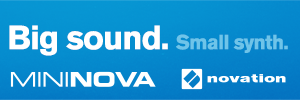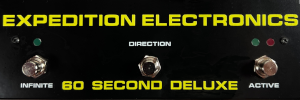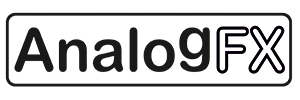Showing posts sorted by date for query Dartmouth Digital Synthesizer. Sort by relevance Show all posts
Showing posts sorted by date for query Dartmouth Digital Synthesizer. Sort by relevance Show all posts
Wednesday, April 24, 2019
Synclavier Digital Introduces the Synclavier KNOB
"Synclavier Digital re-engineers original knob from Synclavier® II as standalone Synclavier KNOB for iconic instrument iOS apps
NOVA SCOTIA, CANADA: Synclavier Digital is proud to announce availability of the standalone Synclavier KNOB — a re- engineered re-creation of the original knob central to the seminal Synclavier® II Digital Synthesizer’s speedy control surface, specially commissioned by co-inventor Cameron Jones as a USB device designed to perfectly compliment the newly- created Canadian corporation’s creation of a next-generation Synclavier, recently released as awe-inspiring Synclavier Go! and Synclavier Pocket! iOS apps fit for today’s owners of Apple’s inescapable iPad and iPhone/iPod Touch platforms, putting all the famed FM (Frequency Modulation) and Additive (harmonic) synthesis capabilities of the iconic instrument as well as its intuitive panels of easy-to-touch red backlit buttons in anyone’s hands (and pockets) at an affordable fraction of the trailblazing original’s prohibitive pricing — as of April 24…
Monday, February 01, 2016
Compositions on the Dartmouth Digital Synthesizer
Published on Jun 2, 2015
Provided to YouTube by Smithsonian Folkways Recordings
Georganna's Farewell · Jon Appleton
Bilder (Images) · Lars-Gunnar Bodin
Emergence · Russell Pinkston
Tapestry I · William Brunson
The Dartmouth Digital Synthesizer
℗ 2004 Smithsonian Folkways Recordings / 1976 Folkways Records
Released on: 1976-01-01
The Dartmouth Digital Synthesizer was the precursor to the NED Synclavier. See the Dartmouth Digital Synthesizer label below for more.
Sunday, September 13, 2015
An Interview with Barry Schrader
Hi everyone! As you know Barry Schrader will be giving his farewell concert at CalArts on September 26. The following is the beginning of my interview with him. I opted to post the questions and answers as they come in. New QAs will get a new post so you do not miss them and they will be added to this post so we have one central post for the full interview. This should make it easier for all of us to consume in our busy lives, and it will allow you to send in any questions that may come to mind during the interview process. If you have anything you'd like to ask Barry, feel free to send it in to matrixsynth@gmail.com. This is a rare opportunity for us to get insight on a significant bit of synthesizer history, specifically with early Buchla systems, and I'd like to thank Barry for this opportunity. Thank you Barry!
Saturday, July 04, 2015
I Dream Of Wires Coming to VOD & Worldwide DVD Release - Berlin Screening with Morton Subotnick
I Dream of Wires is coming to video on demand via iTunes and Vimeo on Demand on August 10. The DVD will be released in Europe, Africa, Asia and Latin America on July 31st. To celebrate, there will be a screening in Berlin with a performance and Q&A session with Morton Subotnick.
"To celebrate the August VOD/DVD release of I DREAM OF WIRES, the definitive and acclaimed electronic music documentary about the rise, fall and rebirth of the modular synthesizer, MONODUO FILMS presents a very special screening and electronic music event in Berlin.
On Tuesday July 28, I DREAM OF WIRES will celebrate it’s release premiere in Berlin, followed by a live performance by the legendary Morton Subotnick. Taking place at Babylon Kino Berlin, Morton Subotnick, accompanied by his frequent collaborator, video artist Lillevan, presents FROM SILVER APPLES OF THE MOON TO A SKY OF CLOUDLESS SULFUR REVISITED: VI, marking Subotnick’s first live appearance in Germany since 2011.
Morton Subotnick’s contributions to electronic music cannot be overstated; as a founding member of the seminal San Francisco Tape Music Center, Subotnick played a key role in the conception and development of the influential Buchla modular synthesizer. Armed with his Buchla, Subotnick composed and recorded the landmark 1967 LP, SILVER APPLES OF THE MOON, widely regarded as a modern classic, and the first all-electronic music album to connect with popular music audiences. In 2010 SILVER APPLES was selected for the National Recording Registry of the Library of Congress. Long considered one of the essential milestones in electronic music, it continues to have great effect on later generations of artists.
Subotnick’s interview in I DREAM OF WIRES, alongside interviews with influential electronic musicians including Trent Reznor, Gary Numan, Carl Craig, James Holden and Vince Clarke, is pivotal in the film, and provides a revealing insight into this true electronic music visionary.
The film will be introduced by I DREAM OF WIRES' director Robert Fantinatto, who will also join Morton Subotnick for a post-screening Q&A. This July 28 event is more than just a celebration of the modular synthesizer; it’s a rare opportunity to learn and experience the historical roots of electronic music.
I Dream Of Wires is an independent documentary about the history, demise and resurgence of the modular synthesizer - exploring the dreams and obsessions of people who have dedicated part of their lives to this fascinating, esoteric electronic music machine. Over 100 inventors, musicians and enthusiasts are interviewed about their relationship with the modular synthesizer - for many, it’s an all-consuming passion.
Through tracing the history of the modular synthesizer, I Dream Of Wires also outlines the history of electronic music as a whole, from its very beginnings at the dawn of the electric age. The film provides a fascinating look at how technology has shaped the electronic music landscape. Today, the modular synthesizer is no longer an esoteric curiosity or even a mere music instrument - it is an essential tool for radical new sounds and a bona fide subculture.
Interviews include:
- Legendary electronic musicians: Trent Reznor (Nine Inch Nails), Morton Subotnick, Gary Numan, Vince Clarke (Erasure).
- Contemporary dance & electronica artists: Carl Craig, James Holden, Legowelt.
- Synthesizer manufacturers: Doepfer, Modcan, Make Noise.
Event Details
Babylon Kino
Rosa-Luxemburg-Strasse 30,
10178 Berlin
28.07.2015 | 8PM
20€ Presales
25€ At the Door
+10€ w/DVD
Tickets Available:
Yapsody: https://wires.yapsody.com
Babylon Kino: http://www.babylonberlin.de
RELEASE INFORMATION
VOD and DVD Release of I Dream of Wires in Europe, Africa, Asia and Latin America will start as follows:
* DVD available July 31 through Cargo Distribution / Amazon
* VOD available August 10 through ITunes and Vimeo on Demand
"To celebrate the August VOD/DVD release of I DREAM OF WIRES, the definitive and acclaimed electronic music documentary about the rise, fall and rebirth of the modular synthesizer, MONODUO FILMS presents a very special screening and electronic music event in Berlin.
On Tuesday July 28, I DREAM OF WIRES will celebrate it’s release premiere in Berlin, followed by a live performance by the legendary Morton Subotnick. Taking place at Babylon Kino Berlin, Morton Subotnick, accompanied by his frequent collaborator, video artist Lillevan, presents FROM SILVER APPLES OF THE MOON TO A SKY OF CLOUDLESS SULFUR REVISITED: VI, marking Subotnick’s first live appearance in Germany since 2011.
Morton Subotnick’s contributions to electronic music cannot be overstated; as a founding member of the seminal San Francisco Tape Music Center, Subotnick played a key role in the conception and development of the influential Buchla modular synthesizer. Armed with his Buchla, Subotnick composed and recorded the landmark 1967 LP, SILVER APPLES OF THE MOON, widely regarded as a modern classic, and the first all-electronic music album to connect with popular music audiences. In 2010 SILVER APPLES was selected for the National Recording Registry of the Library of Congress. Long considered one of the essential milestones in electronic music, it continues to have great effect on later generations of artists.
Subotnick’s interview in I DREAM OF WIRES, alongside interviews with influential electronic musicians including Trent Reznor, Gary Numan, Carl Craig, James Holden and Vince Clarke, is pivotal in the film, and provides a revealing insight into this true electronic music visionary.
The film will be introduced by I DREAM OF WIRES' director Robert Fantinatto, who will also join Morton Subotnick for a post-screening Q&A. This July 28 event is more than just a celebration of the modular synthesizer; it’s a rare opportunity to learn and experience the historical roots of electronic music.
I Dream Of Wires is an independent documentary about the history, demise and resurgence of the modular synthesizer - exploring the dreams and obsessions of people who have dedicated part of their lives to this fascinating, esoteric electronic music machine. Over 100 inventors, musicians and enthusiasts are interviewed about their relationship with the modular synthesizer - for many, it’s an all-consuming passion.
Through tracing the history of the modular synthesizer, I Dream Of Wires also outlines the history of electronic music as a whole, from its very beginnings at the dawn of the electric age. The film provides a fascinating look at how technology has shaped the electronic music landscape. Today, the modular synthesizer is no longer an esoteric curiosity or even a mere music instrument - it is an essential tool for radical new sounds and a bona fide subculture.
Interviews include:
- Legendary electronic musicians: Trent Reznor (Nine Inch Nails), Morton Subotnick, Gary Numan, Vince Clarke (Erasure).
- Contemporary dance & electronica artists: Carl Craig, James Holden, Legowelt.
- Synthesizer manufacturers: Doepfer, Modcan, Make Noise.
Event Details
Babylon Kino
Rosa-Luxemburg-Strasse 30,
10178 Berlin
28.07.2015 | 8PM
20€ Presales
25€ At the Door
+10€ w/DVD
Tickets Available:
Yapsody: https://wires.yapsody.com
Babylon Kino: http://www.babylonberlin.de
RELEASE INFORMATION
VOD and DVD Release of I Dream of Wires in Europe, Africa, Asia and Latin America will start as follows:
* DVD available July 31 through Cargo Distribution / Amazon
* VOD available August 10 through ITunes and Vimeo on Demand
Wednesday, January 01, 2014
Happy New Year! The Year in Synths 2013
Happy New Year Everyone!
What a busy year it has been in the world of synths.
This is going to be one doozy of a post, so bear with me. This post is a review of the year in synths for 2013. We begin with Tributes to Those We Lost This Year, followed by New Manufacturers & Makers, Older Manufacturers Added to the Site, New Gear Announcements, Top 10 Posts by Traffic, My Standout Posts for the Year, and finally This Years' Synth Events. I did my best to keep things as short and concise as possible.
Let's begin with the hardest part of the post.
Tributes to Those We Lost This Year
RIP Bernard Parmegiani - Electronic & Acoustic Composer
Lou Reed RIP
RIP Dick Raaymakers aka Kid Baltan
RIP George Duke - DreamWeaver
RIP Ralph Dyck, Sept 28, 1941 – May 20, 2013
RIP Ray Manzarek
All missed and never to be forgotten. Take a moment to remember them.
------
New Manufacturers & Makers
Starting last January, I decided to keep a running list of every new manufacturer and maker introduced to the site during the year. This is something I haven't done before and I thought it would be interesting to see how many there were in the year. It's easy to focus on the big synth announcements throughout the year, but what about all the new makers and brands? I shouln't have to go considerably into the significance of new designers on the scene, so I'll just say two things regarding them. One, the number of new makers is a direct reflection on the interest in our scene, and two, these are the creators of new gear which directly translate into new designs not previously available to us. Think about that for a moment. These are makers and designs that did not exist before. They are part of our synth history. So what is the total count of new synth designers for the year? A whopping 113. Think about that a bit. One hundred and thirteen new synth designers and brands this year alone.
Here they are (note a handful date back to 2012, but 2013 marked their momentum and availability):
Wednesday, September 25, 2013
The Dartmouth Digital Synthesizer - Lars Gunnar Bodin-Bilder (Images)
Published on Sep 21, 2013 biedrzyn·103 videos
Re-Published on Jun 2, 2015 #LarsGunnarBodin
"Provided to YouTube by Smithsonian Folkways Recordings
Bilder (Images) · Lars-Gunnar Bodin
The Dartmouth Digital Synthesizer
℗ 2004 Smithsonian Folkways Recordings / 1976 Folkways Records
Released on: 1976-01-01"
Previous video description from biedrzyn:
"Album: V/A The Dartmouth Digital Synthesizer (1976). Lars-Gunnar Bodin (July 15, 1935, Stockholm) is a Swedish pioneer in the field of electronic music during the 1960s, especially in the Scandinavian scene."
The Dartmouth Digital Synthesizer was the precursor to the NED Synclavier. See the Dartmouth label at the bottom of this post for more.
via ... którędy pójdą dzicy święci where you'll find the full post on the release.
"The music on this recording was produced on a new kind of synthesizer developed at the Thayer School of Engineering at Dartmouth College. In 1972 composer Jon Appleton began working with two engineers, Sydney Alonso and Cameron Jones, to develop a computer-controlled synthesizer. Significant work had already been done on digital synthesis, but it was felt by the inventors at Dartmouth that an inexpensive, totally dedicated system could help many composers explore this new way of producing sound. The inventors also wanted to create a users language which did not require computer expertise as had previous computer music programs..."
via f * mass
Wednesday, September 26, 2012
An Interview with Jon Appleton - One of the Creators of the NED Synclavier
via Astronauta Pinguim where you'll find the full interview.
"APPLETON - I have the first and the second Synclavier but I don't play them. I am not sure they work. Sydney and Cameron and I developed the instrument first from something called The Dartmouth Digital Synthesizer. It was my conception and their design..."
Check out the "all-star" pic below. You should recognize some of the names. Peter Zinovieff was he man behind EMS. Via Fabricio Carvalho on The MATRIXSYNTH Lounge
Astronauta Pinguim also brought us interviews with Vince Clark, Gershon Kingsley, Herb Deutsch, and Jean Jacques Perrey.
Remember you can find all interviews featured on the site via the Interviews label below.
Saturday, April 14, 2007
The First Synth to....
Update: The new home for this list is now here. You can add to the list there or comment here and I will update both lists. Note that the complete list however will be there as I do not plan on updating this list with updates made there. That would be too much work and would compete with me being able to put up new posts here. Can't let that happen. : ) Related but separate from that list also see https://120years.net. That said...
If you are going to add to the list in the comments, use the same format.
Year - Manufacturer - Model - First at
1837 - C.G. Page (Salem. Mass) - first to produce electronically generated sound (not necessarily associated with a musical instrument). After inventing the Volta in 1800 (an early battery), in 1837 Page was doing experiments with coils and realized when certain coils were attached to a batter they omitted a ringing sound. While he initially thought the ring came from the electrical current was interrupted (battery disconnected), what was actually taking place was the induction through the coils was causing them to vibrate. via Peter Grenader
1885 - Person and Ernst Lorenz -'Elektrisches Musikinstrument' - the first musical instrument designed to produce electrically generated sound. It used electronic vibrations to drive an electromagnet that were connected to resonating boards, which translated these vibrations to sound. via Peter Grenader
1897 - Taddaeus Cahills - Telharmonium - electromechanical instrument.
1936 - Oskar Sala - Mixturtrautonium - first synth using Subharmonic synthesis
1939 - Homer Dudley invents the Parallel Bandpass Vocoder (VODER) - A manually key operated speech synthesizer
1940 - Homer Dudley invents the The Voder speech synthesizer - A device which used the human voice and an artificial voice to produce a composite
Both were researched as a way to transmit speech over copper wires (id est, telephone lines)
1948 - Hugh LeCaine - Electronic Sackbut - First voltage-controlled synthesizer
1948 - Dr. Raymond Scott - Wall of Sound - First polyphonic Sequencing Worstation (electromechanical) and the Electronum - first sequencer.
1950 - CSIR - Mk 1 - The first known use of a digital computer for the purpose playing music
1956 - Louie and Bebe Barron - Produced the first all-electronic musical score for a major motion picture - MGM's 'Forbidden Planet'
1957 - Max V. Mathews at Bell Labs - MUSIC - the first digital synthesizer. Technically, it was a computer program, though it set the stage for every digital synthesizer that proceeded it. See Laurie Spiegel with one here.
1963/64 - Buchla - model 100 modular - 1st "modern" modular synth
1967 - Moog - Moog modular synthesizer I, II & III - 1st commercial modular synth.
1969 - EMS - Synthi VCS-3 - first non-modular mini-synth
1970 - MOOG - Minimoog - 1st Mono Synth with keys (non-modular)
1971 - Tonus/Arp - Soloist - 1st preset mono synth
1971 - John Chowning - developed FM synthesis using the MUSIC-IV language (source), a direct descendent of Mathew's MUSIC program. FM synthesis was later licensed by Yamaha, and used in popular synths such as the DX-7.
1972 - Triadex Muse - first digital synth
""is the first digital musical instrument and was produced in 1972. It was
designed by Edward Fredkin and Marvin Minsky at MIT. It is an algorithmic
music generator: it uses digital logic circuits to produce a sequence of
notes based on the settings of various parameters. It has four small sliders
in that control Volume, Tempo, Pitch, and Fine Pitch. It is not known how
many were made, but they are considered extremely rare.
The Muse is the subject of U. S. Patent 3610801"
1973 - Coupland Digital Music Synthesizer - First Digital (Triadex beat it?) Update via Peter Grenader: "No time to read through all these posts to see if it's come up yet, but the Coupland was vaporwear...it never existed. I met Mark Vail, who's now a friend, by writing him a letter informing him that his story about the Coupland in his Vintage Synthesizers book (GREAT book) which mentioned it's only recorded showing was at the AES show in LA in 1978 was a farce. I was there - at their booth and their suite in the Hilton where the instrument was said to be. I was there on the first day, I was there on the last day. The only thing they had was a small model - about six inches across, sitting on a table. The booth was amazing - this radial orb multiple people could sit in, with a cover that came over each person which played what I remembered was a very impressive demo which swirled around four speakers inside the box. I, and everyone else, were blown away. They kept saying...'it will be here tomorrow, it'll be here tomorrow'...so I showed up the last day just to see it, figuring by the then it would have arrived...it didn't. I did see the frst Synthclavier at that show however. Their suite was across the hall from the Coupland folk. That completely kicked the crap out of everything else shown that year."
1973 - Dartmouth Digital Synthesizer - NED - Synclavier prototype - first digital synth
1974 - Roland - SH-3A - first commercial additive synth
1974 - RMI - Harmonic Synthesizer - first commercial additive synth
1975 - Buchla 502 - six voice polyphonic with minicomputer and ability to save patches to tape drive. Development on the 500 series began in 1969.
1975 - Oberheim FVS - four voice polyphonic with Polyphonic Synthesizer Programmer. Not sure if the Buchla 502 or FVS was released first.
1976 - PPG - PPG 1003 sonic carrier - 1st programmable mono/duo synth with patch memory (this, along with the model 1020, might have been the 1st synths to use DCO's as well)
1977 - Yamaha - CS50/CS60/CS80 - first single enclosure polyphonic keyboard synthesizers with the CS80 to be the first synth with poly aftertouch
1977 (late) - Oberheim - OB-1 - 1st commercial programmable mono synth with patch memory
1978 (late) - PPG - Wavecomputer 360 - 1st wavetable synth
1978 - Sequential Circuits - microprocessor control the SCI prophet 10 (briefly) and the P-5 --- again based on existing E-mu tech stuff
1979 - NED - Synclavier - First FM
1979 - Fairlight CMI - First Sampler, First Workstation
1980 - Performance Music Systems - Syntar - First self contained keytar
1982 - Sequential Circuits - Prophet 600 / First Midi Synthesizer (though some argue the Prophet 5 rev 3.2 is pre-MIDI MIDI)
1983 - Yamaha - DX7 - Digital takes over, FM goes mainstream
1983 - OSC - OSCar - First real-time additive with analog filters
1984 - Sequential Circuits - SixTrak - first multitimbral
1985 - Casio - CZ-101 - First battery-powered all digital mini-synth
1987 - Kawai K5 and Technos Axcel - first additive synths
1989 - E-Mu Systems - Proteus - First dedicated ROMpler
1992 - Seer Systems - first host-based software synthesizer in 1992
1994 - Yamaha - VL1 - first physical modelling synth
1995 - Clavia - Nord Lead - 1st Virtual Analog
1996 - Rubberduck - still not the first softsynth but came before Seer Systems Reality.
1996 - Steinberg - VST - Ok not a synth but enabled a lot to be written as plug-ins and used simultaneously
1997 - Seer Systems - Reality - First Modular Soft Synth
2002 - Hartmann Neuron - first neuronal synth
2912 - KalQuestoTron - the first genetically engineered synth. Each cell is an oscillator, filter, and neural sequencer. Can be delivered via injection to always play 'hold music' in your head.
I thought it might be fun to have a "first synth to..." post. There's been a lot of buzz over Sonic State's Top 20 Synths of All Time with good reason. What exactly is a "top synth?" Is it it's influence on the music scene? It's rarity and lust appeal? The number of synths sold? According to Sonic State their list was the result of Sonic State reader's voting for their favorite synths. Blame the voters if you don't like what you see. Based on what has come up on the list so far, the E-Mu Proteus and Roland JV-1080 for example as well as the Roland Jupiter 8 not even making the top ten, I'm guessing a bit of it has to do with the vote and... possibly the most influential/ground breaking synths for their time. The JV1080 and Proteus? Not super sexy in this day and age, but what they offered in their time? Who knows. It's obviously subjective. But there is something that isn't. The most influential synths of all time not because they were super sexy or utilitarian, but because they offered something that was not previously available.
I thought what might be interesting to create a list of the first synths to feature a particular technology or feature. For example what was the fist synth to bring FM to the table? Was it the DX7 or a predecessor? What was the first digital synth and when? The first additive synth? I have a good idea and could probably look it all up, but that wouldn't be any fun, so.... You tell me. I am going to make this an open post that will live over time. You get to participate by putting an entry in the comments. I will update the list and when I do I will change the time stamp of the post to keep it current. That said, for the archives, this post went up with a time stamp of 4/11/07 7:20 PM PST. I'll start the list (btw, do correct me on the MOOG, what model should we be talking about here? The A, B, C or D or all of them?).
Year - Manufacturer - Model - First at
1970 - MOOG - Minimoog - 1st Mono Synth with keys (non-modular)
1978 - Sequential Circuits - Prophet 5 - 1st Programmable Polyphonic Analog
... List continues above.
Update 3/34/12: Also see the first synthesizers to offer patch storage here.
If you are going to add to the list in the comments, use the same format.
Year - Manufacturer - Model - First at
1837 - C.G. Page (Salem. Mass) - first to produce electronically generated sound (not necessarily associated with a musical instrument). After inventing the Volta in 1800 (an early battery), in 1837 Page was doing experiments with coils and realized when certain coils were attached to a batter they omitted a ringing sound. While he initially thought the ring came from the electrical current was interrupted (battery disconnected), what was actually taking place was the induction through the coils was causing them to vibrate. via Peter Grenader
1885 - Person and Ernst Lorenz -'Elektrisches Musikinstrument' - the first musical instrument designed to produce electrically generated sound. It used electronic vibrations to drive an electromagnet that were connected to resonating boards, which translated these vibrations to sound. via Peter Grenader
1897 - Taddaeus Cahills - Telharmonium - electromechanical instrument.
1936 - Oskar Sala - Mixturtrautonium - first synth using Subharmonic synthesis
1939 - Homer Dudley invents the Parallel Bandpass Vocoder (VODER) - A manually key operated speech synthesizer
1940 - Homer Dudley invents the The Voder speech synthesizer - A device which used the human voice and an artificial voice to produce a composite
Both were researched as a way to transmit speech over copper wires (id est, telephone lines)
1948 - Hugh LeCaine - Electronic Sackbut - First voltage-controlled synthesizer
1948 - Dr. Raymond Scott - Wall of Sound - First polyphonic Sequencing Worstation (electromechanical) and the Electronum - first sequencer.
1950 - CSIR - Mk 1 - The first known use of a digital computer for the purpose playing music
1956 - Louie and Bebe Barron - Produced the first all-electronic musical score for a major motion picture - MGM's 'Forbidden Planet'
1957 - Max V. Mathews at Bell Labs - MUSIC - the first digital synthesizer. Technically, it was a computer program, though it set the stage for every digital synthesizer that proceeded it. See Laurie Spiegel with one here.
1963/64 - Buchla - model 100 modular - 1st "modern" modular synth
1967 - Moog - Moog modular synthesizer I, II & III - 1st commercial modular synth.
1969 - EMS - Synthi VCS-3 - first non-modular mini-synth
1970 - MOOG - Minimoog - 1st Mono Synth with keys (non-modular)
1971 - Tonus/Arp - Soloist - 1st preset mono synth
1971 - John Chowning - developed FM synthesis using the MUSIC-IV language (source), a direct descendent of Mathew's MUSIC program. FM synthesis was later licensed by Yamaha, and used in popular synths such as the DX-7.
1972 - Triadex Muse - first digital synth
""is the first digital musical instrument and was produced in 1972. It was
designed by Edward Fredkin and Marvin Minsky at MIT. It is an algorithmic
music generator: it uses digital logic circuits to produce a sequence of
notes based on the settings of various parameters. It has four small sliders
in that control Volume, Tempo, Pitch, and Fine Pitch. It is not known how
many were made, but they are considered extremely rare.
The Muse is the subject of U. S. Patent 3610801"
1973 - Coupland Digital Music Synthesizer - First Digital (Triadex beat it?) Update via Peter Grenader: "No time to read through all these posts to see if it's come up yet, but the Coupland was vaporwear...it never existed. I met Mark Vail, who's now a friend, by writing him a letter informing him that his story about the Coupland in his Vintage Synthesizers book (GREAT book) which mentioned it's only recorded showing was at the AES show in LA in 1978 was a farce. I was there - at their booth and their suite in the Hilton where the instrument was said to be. I was there on the first day, I was there on the last day. The only thing they had was a small model - about six inches across, sitting on a table. The booth was amazing - this radial orb multiple people could sit in, with a cover that came over each person which played what I remembered was a very impressive demo which swirled around four speakers inside the box. I, and everyone else, were blown away. They kept saying...'it will be here tomorrow, it'll be here tomorrow'...so I showed up the last day just to see it, figuring by the then it would have arrived...it didn't. I did see the frst Synthclavier at that show however. Their suite was across the hall from the Coupland folk. That completely kicked the crap out of everything else shown that year."
1973 - Dartmouth Digital Synthesizer - NED - Synclavier prototype - first digital synth
1974 - Roland - SH-3A - first commercial additive synth
1974 - RMI - Harmonic Synthesizer - first commercial additive synth
1975 - Buchla 502 - six voice polyphonic with minicomputer and ability to save patches to tape drive. Development on the 500 series began in 1969.
1975 - Oberheim FVS - four voice polyphonic with Polyphonic Synthesizer Programmer. Not sure if the Buchla 502 or FVS was released first.
1976 - PPG - PPG 1003 sonic carrier - 1st programmable mono/duo synth with patch memory (this, along with the model 1020, might have been the 1st synths to use DCO's as well)
1977 - Yamaha - CS50/CS60/CS80 - first single enclosure polyphonic keyboard synthesizers with the CS80 to be the first synth with poly aftertouch
1977 (late) - Oberheim - OB-1 - 1st commercial programmable mono synth with patch memory
1978 (late) - PPG - Wavecomputer 360 - 1st wavetable synth
1978 - Sequential Circuits - microprocessor control the SCI prophet 10 (briefly) and the P-5 --- again based on existing E-mu tech stuff
1979 - NED - Synclavier - First FM
1979 - Fairlight CMI - First Sampler, First Workstation
1980 - Performance Music Systems - Syntar - First self contained keytar
1982 - Sequential Circuits - Prophet 600 / First Midi Synthesizer (though some argue the Prophet 5 rev 3.2 is pre-MIDI MIDI)
1983 - Yamaha - DX7 - Digital takes over, FM goes mainstream
1983 - OSC - OSCar - First real-time additive with analog filters
1984 - Sequential Circuits - SixTrak - first multitimbral
1985 - Casio - CZ-101 - First battery-powered all digital mini-synth
1987 - Kawai K5 and Technos Axcel - first additive synths
1989 - E-Mu Systems - Proteus - First dedicated ROMpler
1992 - Seer Systems - first host-based software synthesizer in 1992
1994 - Yamaha - VL1 - first physical modelling synth
1995 - Clavia - Nord Lead - 1st Virtual Analog
1996 - Rubberduck - still not the first softsynth but came before Seer Systems Reality.
1996 - Steinberg - VST - Ok not a synth but enabled a lot to be written as plug-ins and used simultaneously
1997 - Seer Systems - Reality - First Modular Soft Synth
2002 - Hartmann Neuron - first neuronal synth
2912 - KalQuestoTron - the first genetically engineered synth. Each cell is an oscillator, filter, and neural sequencer. Can be delivered via injection to always play 'hold music' in your head.
I thought it might be fun to have a "first synth to..." post. There's been a lot of buzz over Sonic State's Top 20 Synths of All Time with good reason. What exactly is a "top synth?" Is it it's influence on the music scene? It's rarity and lust appeal? The number of synths sold? According to Sonic State their list was the result of Sonic State reader's voting for their favorite synths. Blame the voters if you don't like what you see. Based on what has come up on the list so far, the E-Mu Proteus and Roland JV-1080 for example as well as the Roland Jupiter 8 not even making the top ten, I'm guessing a bit of it has to do with the vote and... possibly the most influential/ground breaking synths for their time. The JV1080 and Proteus? Not super sexy in this day and age, but what they offered in their time? Who knows. It's obviously subjective. But there is something that isn't. The most influential synths of all time not because they were super sexy or utilitarian, but because they offered something that was not previously available.
I thought what might be interesting to create a list of the first synths to feature a particular technology or feature. For example what was the fist synth to bring FM to the table? Was it the DX7 or a predecessor? What was the first digital synth and when? The first additive synth? I have a good idea and could probably look it all up, but that wouldn't be any fun, so.... You tell me. I am going to make this an open post that will live over time. You get to participate by putting an entry in the comments. I will update the list and when I do I will change the time stamp of the post to keep it current. That said, for the archives, this post went up with a time stamp of 4/11/07 7:20 PM PST. I'll start the list (btw, do correct me on the MOOG, what model should we be talking about here? The A, B, C or D or all of them?).
Year - Manufacturer - Model - First at
1970 - MOOG - Minimoog - 1st Mono Synth with keys (non-modular)
1978 - Sequential Circuits - Prophet 5 - 1st Programmable Polyphonic Analog
... List continues above.
Update 3/34/12: Also see the first synthesizers to offer patch storage here.
Monday, November 20, 2006
The First Digital Synthesizers

A friend of mine asked me what the first digital synth was. To my surprise I wasn't sure. We all know it was the Yamaha DX7 (1983) that changed the landscape from analog to digital, but it clearly wasn't the first. The NED Synclavier (1975) and the Crumar/DKI GDS (197x?) and Synergy (1982) predate it. If anyone out there knows for sure, feel free to comment. Image of the Crumar/DKI GDS via synthony.
Snip on the GDS via Synthmuseum.com:
"'The GDS came out of some early research at Bell Laboratories in the early '70s,' explains Mercer 'Stoney' Stockell, who himself shared in developing the GDS and Synergy. 'Hal Alles, a researcher there, designed the high-speed additive engine that was put into the GDS and later systems. He was a very bright man. The work originally came out of some stuff he was supposed to be doing for echo-cancellation on telephone lines.'"
BTW, regarding the DX7, be sure to check out this post on the Yamaha FX1.
Update via adam s in the comments:
"The Dartmouth Digital Synthesizer is the Synclavier's ancestor. This is recognized as the first digital synthesizer existing as a self-contained instrument, closed system or whathaveyou. Of course, the first digital synthesizer (that is, first digital device to synthesize sound for the sake of music), is the IBM 704 Mainframe computer, on which Max Matthews created Music I in 1957. It's amazing how far computer synthesis predates 'digital synthesizers'. I'm sure that in that almost 20 year span, plently of people had developed (successfully or not) digital synthesizers, especially during the early 70's microprocessor boom."
LABELS/MORE:
Analogue Systems,
Crumar,
Dartmouth Digital Synthesizer,
GDS,
NED,
Synclavier,
Synergy,
Yamaha
HOME
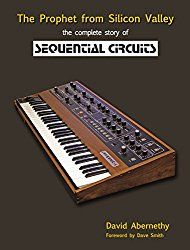



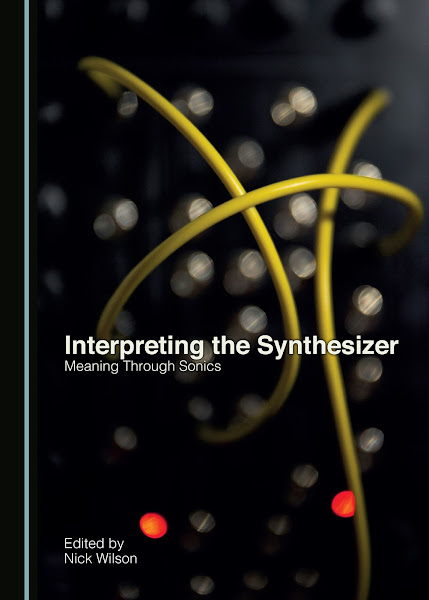
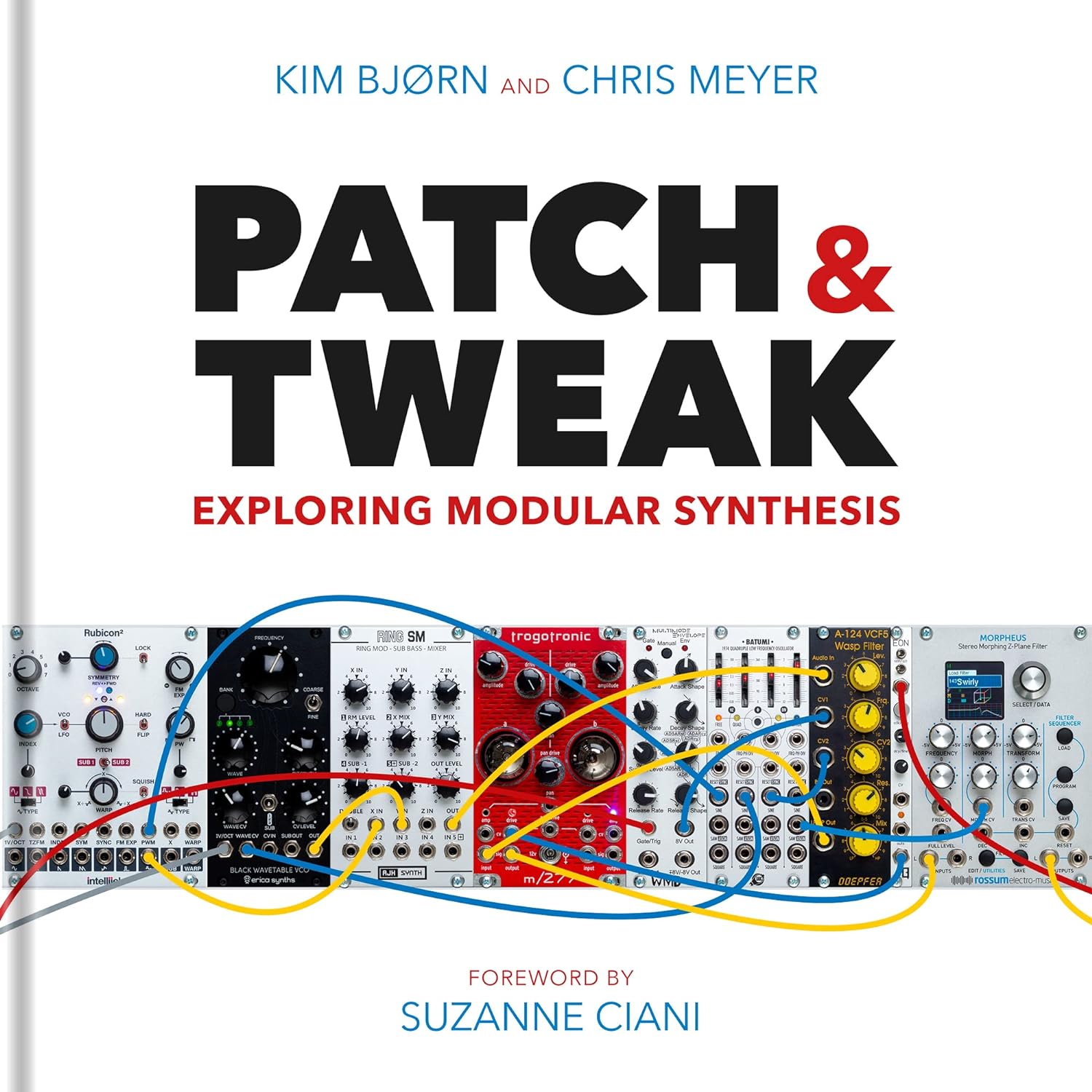

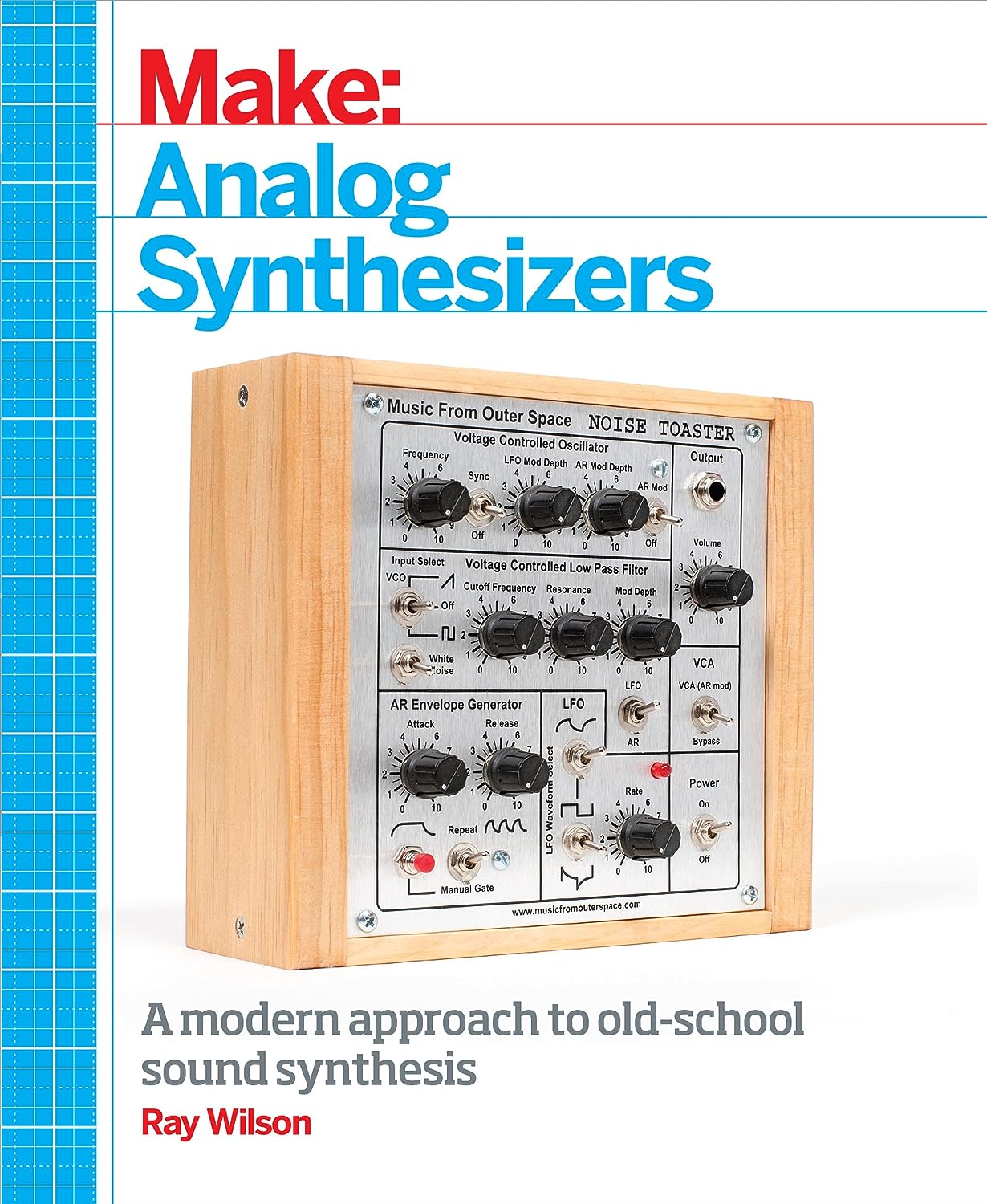

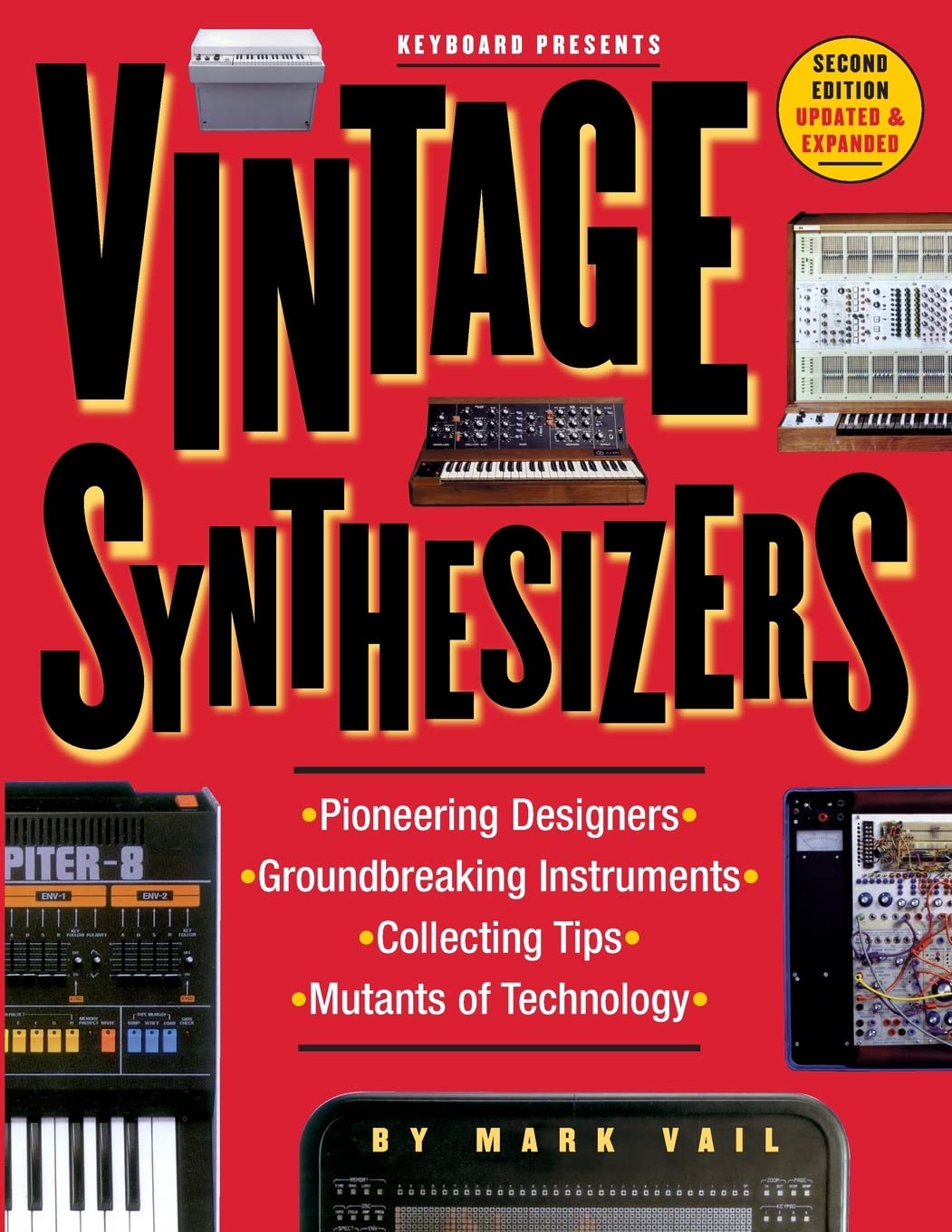
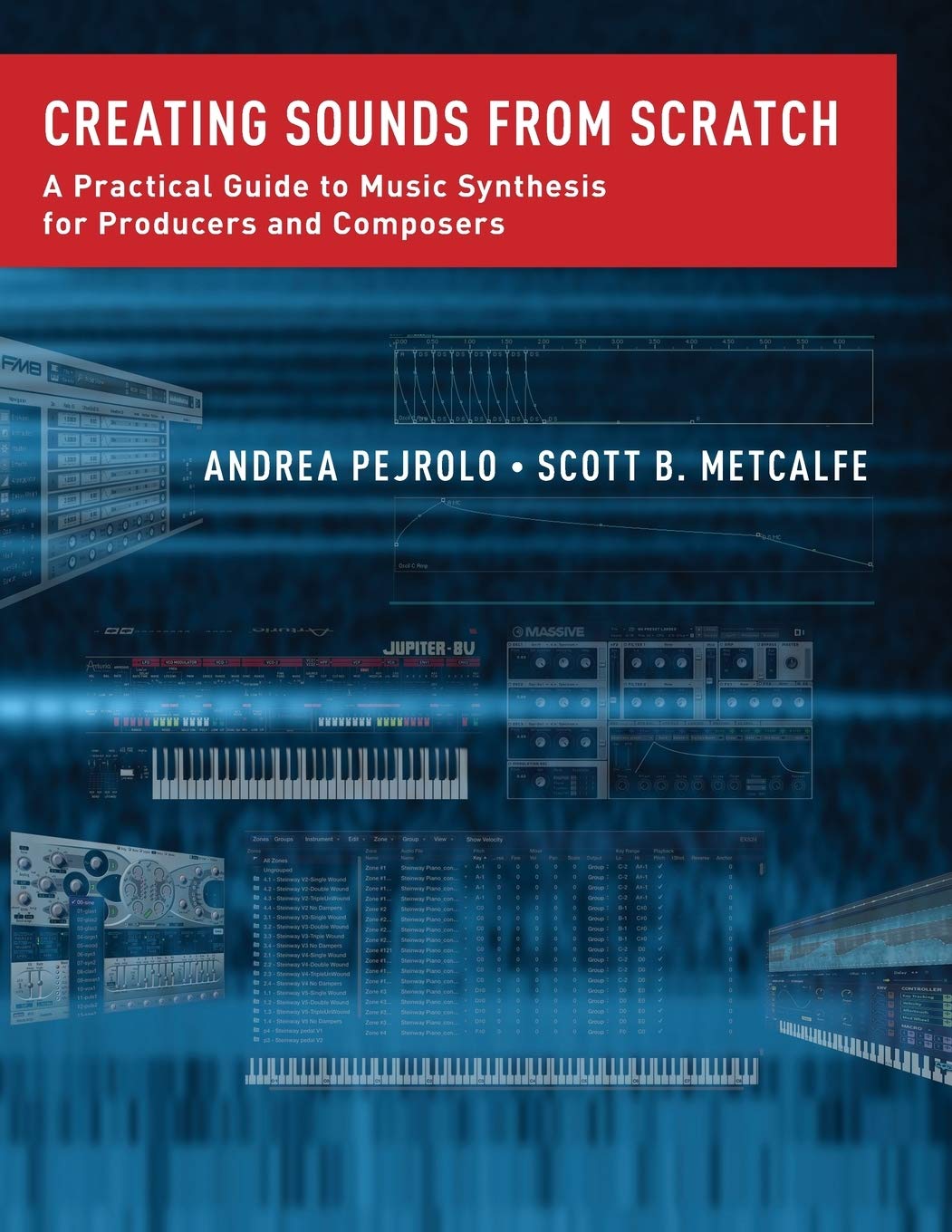
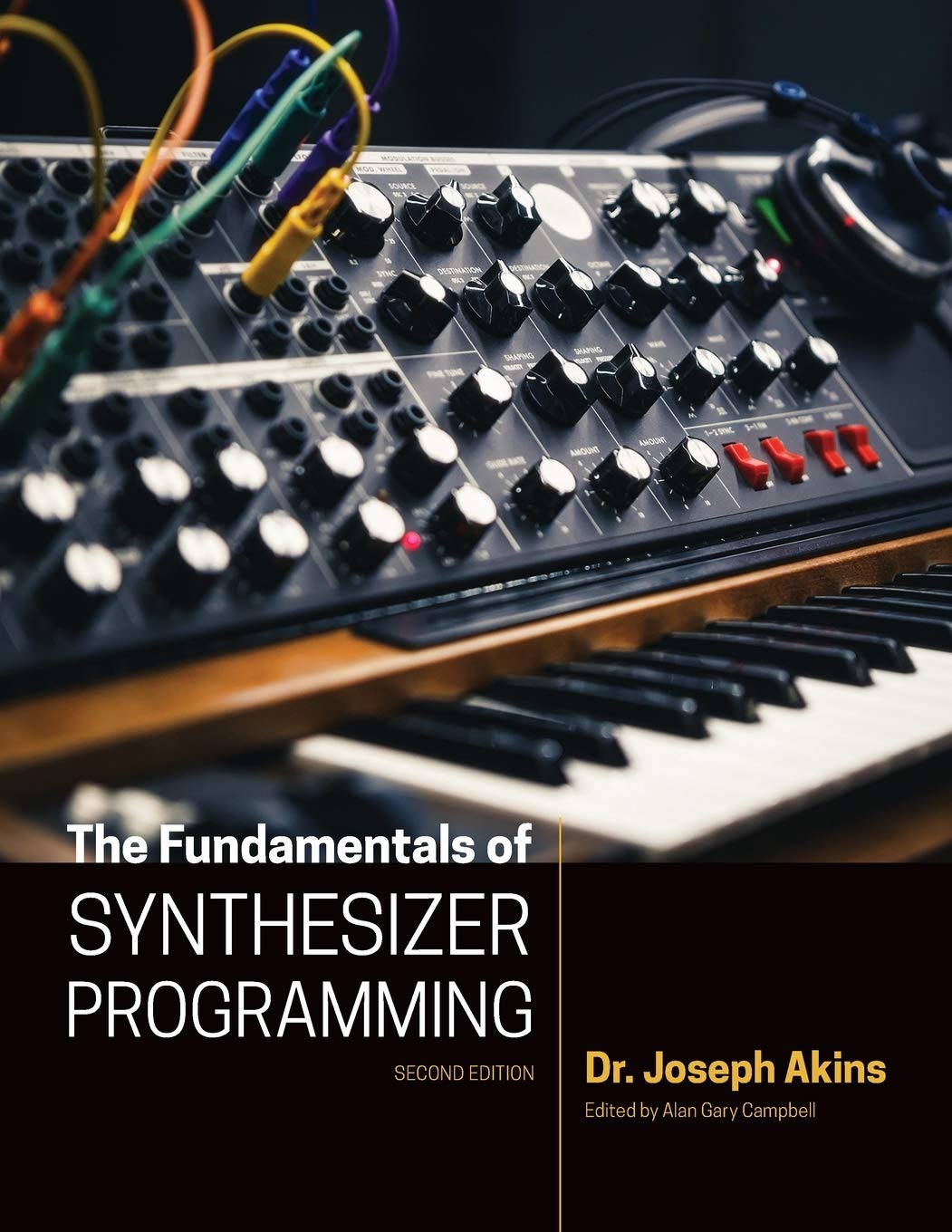

© Matrixsynth - All posts are presented here for informative, historical and educative purposes as applicable within fair use.
MATRIXSYNTH is supported by affiliate links that use cookies to track clickthroughs and sales. See the privacy policy for details.
MATRIXSYNTH - EVERYTHING SYNTH













© Matrixsynth - All posts are presented here for informative, historical and educative purposes as applicable within fair use.
MATRIXSYNTH is supported by affiliate links that use cookies to track clickthroughs and sales. See the privacy policy for details.
MATRIXSYNTH - EVERYTHING SYNTH









